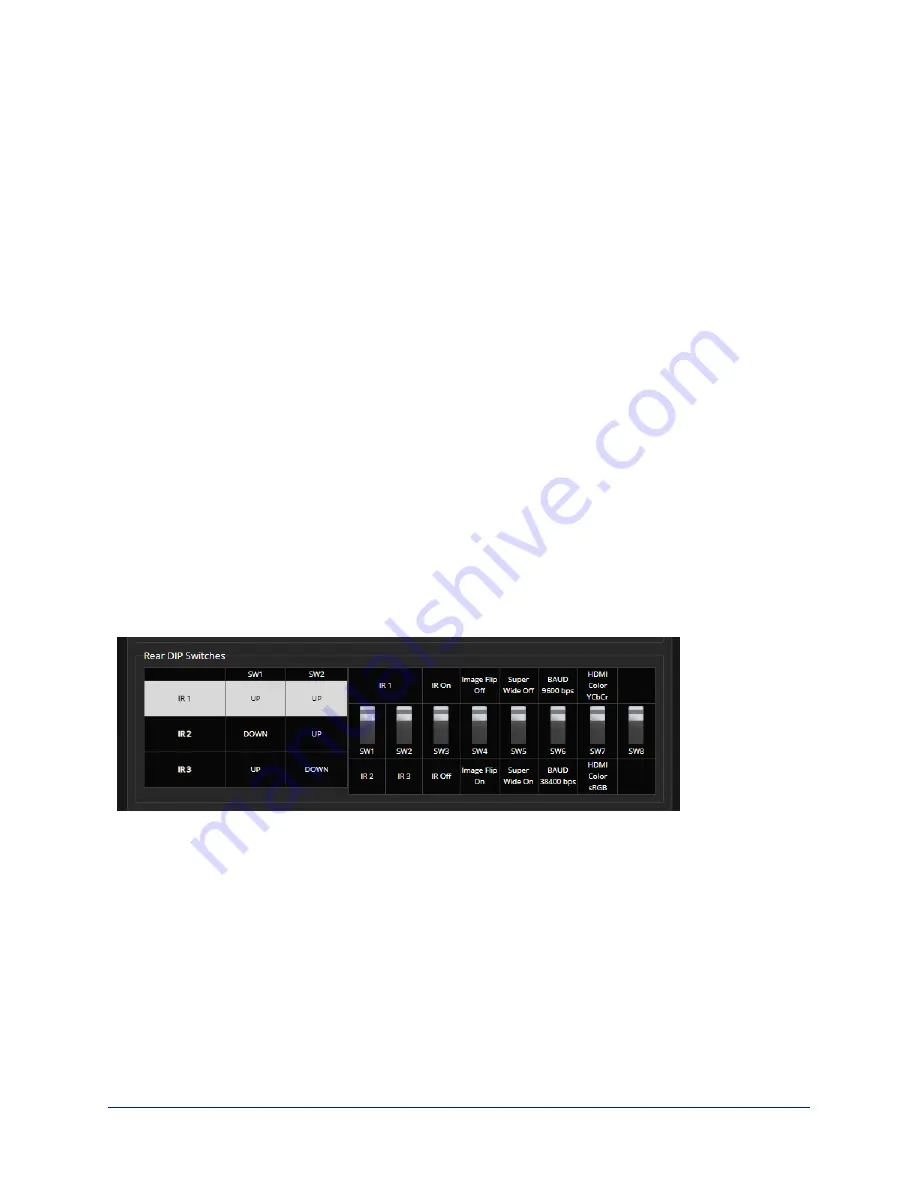
Camera Behavior Settings – RoboSHOT 12 USB
The RoboSHOT 12 USB camera uses DIP switches to set camera behaviors; the RoboSHOT 12E USB
and RoboSHOT 30E USB cameras set all camera behaviors in the web interface.
A label on the bottom of the camera provides a quick reference for setting the switches.
Set the switches appropriately before mounting the camera.
After the camera is installed, you can read the switches from the camera's web interface.
Note
When the camera is not inverted, DIP switches are in their default positions when they are up.
IR Frequency Selection:
If there are multiple cameras in the room, use
switches 1 and 2
to configure
each with a different IR frequency to allow the IR Remote Commander to control them independently. Then
use the Camera Select buttons at the top of the remote to select the camera you want to control.
n
SW1 and SW2 up: IR frequency 1
n
SW1 down, SW2 up: IR frequency 2
n
SW1 up, SW2 down: IR frequency 3
IR:
Leave
switch 3
in the default UP position if the IR remote will be used.
Image Flip:
If mounting the camera upside-down, set
switch 4
to the DOWN position: IMAGE FLIP ON.
This orients the video image correctly and sets the tilt motors to respond appropriately to tilt up and down
commands from the remote, web interface, and connected control devices.
Super Wide:
In normal mode, the camera has a 67.2º horizontal field of view (HFOV). For Super Wide
mode, set
switch 5
to the DOWN position for a 12X, 73º horizontal angle of view.
Baud:
Set
switch 6
to the baud rate of the device connected to the RS-232 port. The default is 9600 bps.
The 38400 baud setting is optional if the connected control device supports it.
HDMI Color:
Set the color space for the HDMI output to YCbCr (default; switch 7 UP) or sRGB.
Switch 8
is not currently used.
10
Installation Guide for RoboSHOT USB Enterprise-Class PTZ Conferencing Cameras



























